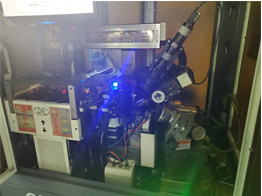What should be Paid Attention to When PCB Copper is Deposited?
2020-07-21

Many empty spaces on the PCB are filled with copper. What are the benefits of doing so. What to pay attention to when applying copper, let PCB Materials Company talk about it in detail.
Copper pour is to use the unused space on the PCB as a reference surface and then fill it with solid copper. These copper areas are also called copper filling. The significance of copper coating is to reduce the impedance of the ground wire and improve the anti-interference ability; reduce the voltage drop and improve the efficiency of the power supply; in addition, it is connected to the ground wire to reduce the loop area.
If the PCB has more grounds, such as SGND, AGND, GND, etc., how to pour copper? According to the position of the PCB board, the main "ground" is used as a reference to independently pour copper, digital ground and analog It's not much to say how to separate the ground and apply copper. At the same time, before pour the copper, thicken the corresponding power connection: V5.0V, V3.6V, V3.3V (SD card power supply), etc. In this way, multiple deformable structures with different shapes are formed.
There are several problems to be dealt with in copper coating: one is the single-point connection of different grounds, and the other is the copper coating near the crystal oscillator. The quartz crystal in the circuit is a high-frequency emission source. The method is to coat the copper around the crystal oscillator, and then put the crystal oscillator shell Ground separately. The third is the island problem. If you think it is too big, it won't cost much to define a ground via and add it.
In addition, it is better to make a large area copper pour or a grid copper pour. It is not good to generalize. Why? Large area copper, if wave soldering, the board may be up, even blistering. From this point of view, the heat dissipation of the grid is better. It is usually a multi-purpose grid with high requirements for anti-interference in high-frequency circuits, and circuits with large currents in low-frequency circuits are usually complete copper.
In digital circuits, especially circuits with MCUs, circuits with operating frequencies above the mega-level, the role of copper coating is to reduce the impedance of the entire ground plane. The more specific processing method I generally operate is like this: each core module will also be copper-clad in different areas when allowed, and then use wires to connect the copper-clad copper. The purpose of this is to reduce the number of circuits at all levels. The impact of time.
I won’t say much about the mixed circuit of the digital circuit and the analog circuit, the independent routing of the ground wire, and the final summary to the power supply filter capacitor. Everyone is clear. However, there is one point: the distribution of ground wires in analog circuits cannot be simply laid as a piece of copper. Because analog circuits pay attention to the interaction between the front and rear stages, and the analog ground also requires single-point grounding, can it be Simulated copper coating has to be handled according to actual conditions. Our company also has Flexible PCB on sale, welcome to contact us.
